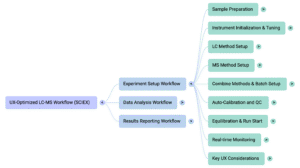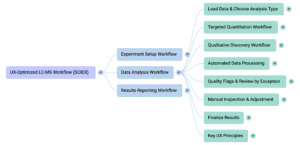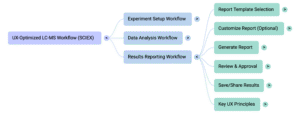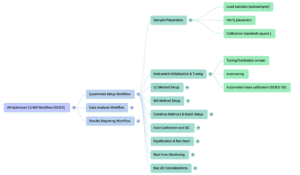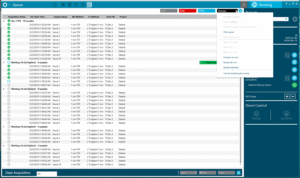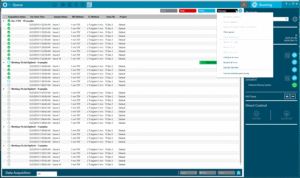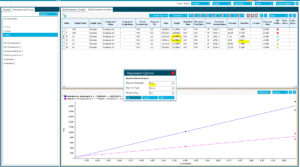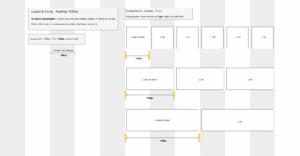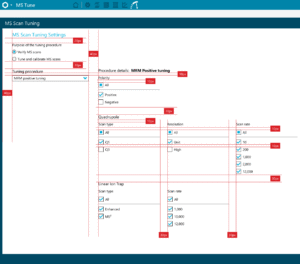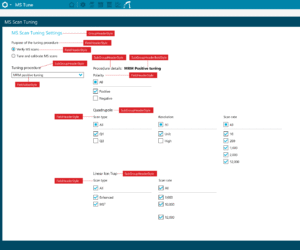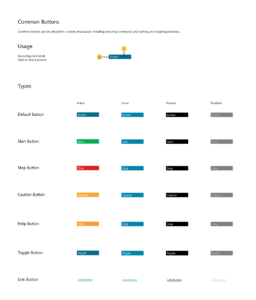At SCIEX, I worked as a UX/UI Designer in one of the most demanding environments imaginable: regulated scientific research. My challenge was to help unify more than 20 legacy lab applications into a single, coherent design system, while improving workflows for scientists running high-stakes experiments on mass spectrometry and chromatography instruments.
The Challenge
The software ecosystem was a fragmented maze—each application had been built independently, with different patterns, layouts, and levels of usability. Scientists had to switch between them daily, losing time and introducing opportunities for mistakes. The stakes were enormous: in regulated labs, even a small error could have costly consequences.
My Role
I was responsible for:
- Leading the creation of a scalable, compliance-ready design system
- Designing features across the full workflow: experiment setup, data analysis, and results reporting
- Acting as the sole link between design and development, providing detailed specifications for every feature
- Running deep UX research with scientists, QA teams, and lab technicians, including interviews, shadowing, and usability tests
- Building prototypes to validate solutions before handoff
Design Strategy
Consistency Across the Board I developed a unified design language—navigation patterns, typography, and component libraries—that made switching between tools effortless and reduced training time.
Workflow Mapping and Optimization Through research and shadowing, I mapped the end-to-end scientific workflow. This revealed key friction points, such as repeated manual setup steps. I designed ways to streamline repeatable experiments, cutting down preparation time and minimizing error risk.
Built-In Compliance Audit trails are critical in regulated labs. I designed them to be integrated into workflows so compliance became a natural part of working, not an extra task.
Outcomes
- A design system adopted across 20+ applications
- Noticeable reduction in user training time
- Shorter development cycles thanks to reusable components
- Positive feedback from scientists and QA teams on clarity and usability
Why This Project Matters
SCIEX devices are used to conduct vital scientific work. My designs made those workflows faster, clearer, and more reliable. In high-pressure environments, precision, speed, and trust aren’t nice-to-haves, they’re the foundation of everything.
